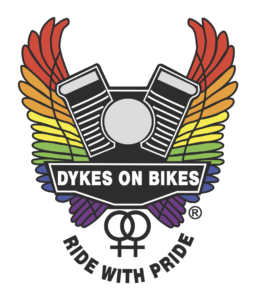Ride Leader Responsibilities
- It is always a good idea to prepare a map of the proposed route with regroup points. (Senior Ride Leader will usually do this but it does not have to be done by them)
- The above should be posted onto the website and Facebook to enable all to get an understanding of the route should they get separated.
- Plan stops & avoid gravel areas
- Plan fuel stops at least every 150km
- Ensure that morning tea and lunch stops have a reservation made (if possible) to ensure they are not booked out.
Pre Ride Briefing
Take your time to do a FULL BRIEFING for every ride, please.
Prior to this Full Briefing, identify all new riders and ensure you run through protocol and procedures with them beforehand.
- RIDE DESTINATION Plus things of interest at the destination and along the way
- RIDE ROUTE Roads, streets, suburbs, turns, names
- RIDE DESCRIPTION Breaks/food, petrol, distances and times – You may choose to distribute maps beforehand if the route is complicated.
- NEW RIDERS Ask for new riders to pair with a more experienced rider
- RIDING PROTOCOL:
- Identify Lead & Tail end
- Staggered formation – Sliding vs passing
- Spacing to the bike in front and stay in your 1/3rd of the lane
- Indicators and hand signals on all lane changes
- Use all the lanes at traffic lights – come back into the group in an orderly manner
- Identify potential hazards by pointing at them
- Single file hand signal
- Going through Tolls
- Confirm that all bikes are gassed and ready
- RIDE SAFETY – Safety tips – pointing at debris and potholes etc
- RIDE COURTESY Don’t get into altercations with other drivers, be courteous
- SIGNING IN Ensure all riders and pillions sign on the run sheet before departure and provide an emergency contact number.
- MOUNT UP 5 MINUTES UNTIL DEPARTURE
10. ENJOY THE DAY Ride and have fun!
Leading A Ride
- Choose and maintain a comfortable pace within the speed limit.
- Keep in mind that people at the end of the group may have to ride a little faster to keep up if there are gaps in the group. (This is not usually an issue for us)
- It may also cause an issue if you ride too slowly. Other road users behind the group may become impatient and try and get around the group.
- If you are on a 3-lane road try and stick to the middle lane. This will allow other road users the opportunity to pass on the outside and other traffic to exit and enter from the inside.
- Know the route well enough so that you can give the group plenty of notice of an approaching turn, also position yourself in the correct lane for that turn.
- Should you miss a turn, don’t slow rapidly to make the turn as the rest of the group may not be expecting the sudden speed reduction. Just take the next turn or do a U-turn when safe to do so.
- Always signal your intentions early. This will allow the rest of the group to prepare for the turn. When changing lanes try and allow enough room in the new lane for the whole group to fit into. Additionally, with enough notice the tail end should change lanes prior to the pack ensuring that the group stays together.
- Always travel on the right-hand side of the lane when riding in a staggered formation.
- Should you not be able to hold the right-hand side of the lane you should inform the group to go into single file.
Incident Management
- As the lead, you should have the contact details for tail end and they should have yours. It is preferable to have blue tooth inside your helmet.
- The tail end should carry the ride sign-on sheet with all ride participants emergency contact details.
- Should there be an incident the tail end will be the one that takes charge of the incident.
- The tail end should contact emergency services as they see fit and secure the scene as best as possible.
- After the scene is secured and safe, the lead rider is to be contacted and informed of the incident. It is then the lead rider’s decision to continue with or cancel the ride.
- Should it require, the emergency contact for the injured rider should be contacted by one of the committee members (should they be on the ride) and advise them of what has happened and what next steps will be taken.
January 2020
